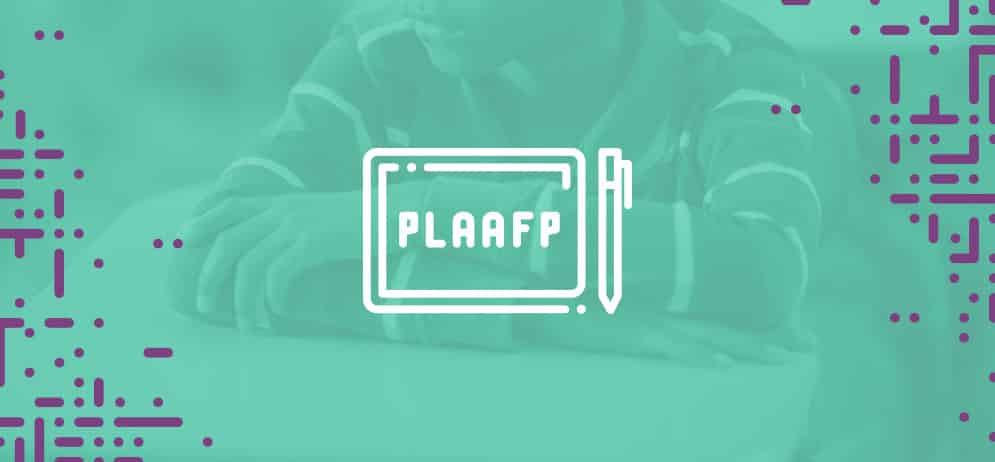Present levels of academic achievement and functional performance (PLAAFP) must include a statement on “how the disability affects the child’s involvement and progress in the general education curriculum.” I think of this section as providing the rationale for all subsequent decisions on what special education, related services and supplemental aids and services the student requires. Pretty important!
A well written “how disability affects…” statement describes the nature of the disability and how it will impact the student across school environments. This shared understanding, along with other components of the PLAAFP, helps the team determine the student’s needs, and ultimately, the resources necessary for the student to be involved and progress in the general education curriculum. It helps parents gain a clearer understanding of the challenges their child will encounter in the school setting. Classroom teachers can also better understand their role in providing necessary accommodations and modifications.
To really understand the importance of this section, let’s unpack this statement.
Unpacking the PLAAFP Statement:
What It Means
“How the disability affects…”
To merely identify the student’s disability category does not do justice to the student or this part of the IEP. To describe the student in these terms is too broad to give the reader meaningful and actionable information. Rather, the IEP should describe the actual characteristics the child demonstrates as a result of the disability. Think about it:
Indicating a student has a “health impairment” is not particularly useful unless you describe that Justin’s epilepsy causes him to be disoriented at times; or Rachel’s heart condition causes fatigue; or William’s attention deficit disorder interferes with sustained attention during a lecture.
“Involvement and progress in the general education curriculum.”
First, we know the “general education curriculum” refers to that provided to students without disabilities. Simply put, ALL students’ educations should be designed around an agreed upon set of standards enacted by each state.
Next, “involvement and progress” — think of “involvement” as another word for participation. The criterion is not about proximity to the curriculum; rather, it’s about meaningful participation with curriculum. Meaningful participation requires active interaction, but certain approaches that are pathways to interaction for some students can be barriers for others. The team must identify the requirements or demands for participation in the curriculum in order to assess how an individual student’s disability will affect involvement.
For example, the demands for participation in a science lab might be to follow directions and demonstrate self-regulation for safety — how will a student with poor impulse control fare in this environment? The demand for participation in a high school English class discussion requires the ability to access text — how would a student with a significant reading disability fare in this situation?
A PLAAFP Statement In Practice:
Putting It All Together
- Seth is eligible for special education as a result of cerebral palsy. Seth uses a wheelchair to move through the school environment. His right side is stronger than the left; he has limited muscle control and fatigues easily during fine and gross motor activities. Sixth grade requires frequent writing activities across all classes (demonstrating text types and purposes; note-taking to prepare for assessments or keeping track of homework). These demands will present barriers to Seth’s participation without substantial accommodations for all writing activities.
- Jon’s specific learning disability impacts his reading comprehension and math computation. Jon’s working memory is weak, which means he has difficulty holding on to multiple pieces of information in order to perform an academic task. Working memory is required to engage in most 10th grade academic tasks such as reading comprehension, written expression, and application of math facts and formulas. Jon will have difficulty summarizing text after reading a passage. Taking notes during a quickly paced lecture results in Jon creating incomplete notes. It’s necessary for Jon to acquire multiple strategies to assist in managing his learning, including use of assistive technology, annotation, effective use of graphic organizers, extended practice and chunking new information.
Here’s some hand-picked content you may enjoy:
“Writing High-Quality IEPs” — a video series from Carol Kosnitsky
Here are sentence frames to help the team think more strategically about constructing these statements.
The student’s ___ (disability) __ _ manifests itself in the following ways: (specific characteristics manifested by disability) __. The ___grade level___ curriculum requires students to participate/engage/complete __ (generic skill/activity/demand)__. Given the student’s learning characteristics, he/she will be challenged with tasks/activities that require __(examples of specific skill/activity/demand)__. However, this challenge is minimized and participation is increased when the student is provided the following: __(appropriate supports and services)__.
So where do you get this information?
Each student’s IEP should be based on multiple sources of information. Be sure to consider the following:
- Formal assessment — contributes to describing the disability and the characteristics demonstrated by the student.
- Observations — provides “real-time” information on the student’s response to the demands of the curriculum, as well as their response when the environment is adapted to meet their needs.
- Curriculum — provides team members the opportunity to connect the dots between characteristics and demands.
Remember, involvement is not the end game. Rather, involvement is the pathway to progress. Once the student’s unique characteristics and needs are identified, the team can determine what specially designed instruction, related services and/or supplemental aids and services are necessary to ensure the student makes appropriate progress in light of their circumstances.
